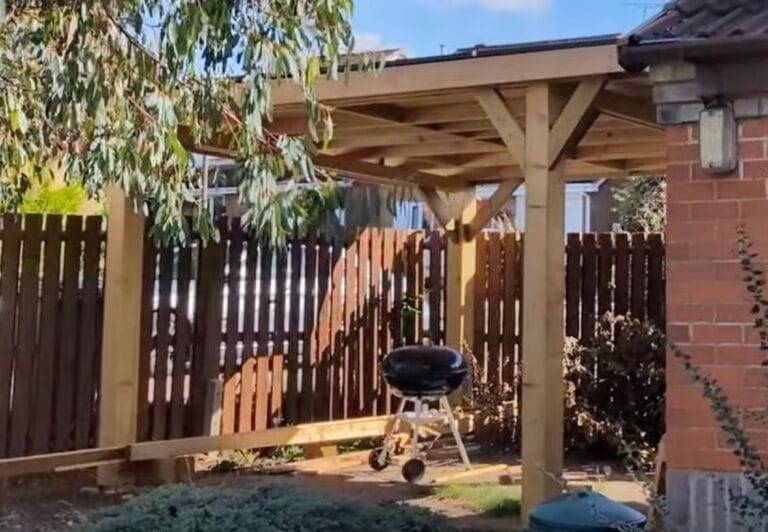Discover practical solutions for extending Sunsynk and Deye CT clamps beyond 15m. Learn how to overcome limitations and optimize your solar energy system.
The CT clamp cable can be extended, and depending on your use case, this can be easy and cheap or sophisticated and more expensive.
- What is a CT Clamp, and What Does It Do?
- What Is the Problem with the CT Clamp Extension?
- Workarounds for Extending the CT Clamp on Sunsynk and Deye
- Conclusion
What is a CT Clamp, and What Does It Do?
A Current Transformer (CT) is measurement equipment employed by the hybrid inverters. It clamps around the line wire of the grid input and induces current which is sent to the inverter over a twisted pair cable. The inverter uses the measured current to extrapolate the size of the current flowing through grid’s line input.

The Inverter Uses this Measurement to Achieve Zero Export
Zero export is achieved by the inverter monitoring the direction and size of the electric current at the grid entry point of your home and cutting off the production of AC from solar when export is detected. The inverter rate of measurements is thousands of times per second. Thus, the inverter reacts quickly as your home’s load reduces or drops to zero. To accurately calculate the power usage the inverter utilises it’s direct connection to the grid to measure its voltage and uses the CT clamp reading for the current. Equipped with the voltage and current consumed from the grid, the inverter accurately calculates the load to your home and allocates energy.
What Is the Problem with the CT Clamp Extension?
Sunsynk and Deye are two brands of the same hardware hybrid inverters equipment.
Sunsynk has a strong recommendation in their user manual not to extend the CT clamp’s cable beyond 15m. This is because the transformation ratio of the CT is 100A/50mA, which means 2000:1. For domestic consumption, typically in the tens of amps, the induced current in the CT is small enough for the additional length of the cable to add significant enough resistance to influence the current by the time the inverter measures it at the other end.
Initially, I did not understand this well, and Sunsynk’s recommendation alone put me off from buying a Sunsynk inverter. Eventually, I discovered potential workarounds, bought the inverter and have been happily using a Page not found at a distance of 20m from the grid entry point.
Workarounds for Extending the CT Clamp on Sunsynk and Deye
There are different ways to solve this problem. None of the solutions I outline is perfect, but they can solve most of the cases reasonably well.
Extend the cable and factor the error in the configuration.
The CT clamp of my Sunsynk 3.6 is connected via 19m of cable. I have a portion of the original twisted pair cable supplied with the inverter, and a CAT5 network cable extends the remaining distance. Once connected to the inverter, the incurred error is immediately obvious. However, I discovered that the error is consistent enough. I employed another well-loved feature of the Sunsynk inverter, the grid trickle feed, to compensate for the error.

The positives of this approach
The positive side of this solution is that it is cheap and easy to implement. Apart from the additional cable, no other materials are required. It works well if you don’t have a hard restriction or requirement for zero export. But even if you had one, you can increase the trickle feed to add a comfortable buffer. Of course, this is if you don’t mind a small import, even when you have enough solar to cover the full load.
The negatives of this approach
The negative side is that the statistics and metrics of the load of your home are skewed. This is not an issue because I have a smart meter that accurately monitors my load and export in real-time, which lets me fine-tune the trickle feed value.
Potential improvement
I have experimented with extending the CT clamp’s cable using larger cross-section area wires. This approach reduced the error size but was insufficient for me to change the current solution. Recently, I discovered that people successfully use speaker cables to extend the CT clamp, which is suggested to be working well. I have bought the cable and will update this post when I confirm the solution.
Amplify the Signal and Transform it Again
There is a video on YouTube about a solution involving a couple of CT clamps working in a system. One CT clamp takes the readings, this clamp is selected with an amplified current size to sustain the longer cable journey. It is incompatible with the inverter therefore, a second CT clamp is introduced to reduce the readings from the first one, and the product of the 2 clamps working together matches the required 2000:1 ratio by the inverter. Watch the full solution video .
Alternatives I have not explored
There are possibilities for employing third-party meters for accurate measurements and more reliable data transfer. I have not explored these as they seem to have been made obsolete by the above solutions for the purpose I wanted to fulfil. This said, such solutions do exist.
Conclusion
Extending the CT clamp on Sunsynk and Deye inverters, though not without its challenges, is feasible with the right approach. Whether you’re looking for a quick and cost-effective solution or a more refined method, the options presented in this guide offer flexibility and efficiency. Always prioritise safety and ensure a thorough understanding of the process to maximise the performance and longevity of your solar energy system.



